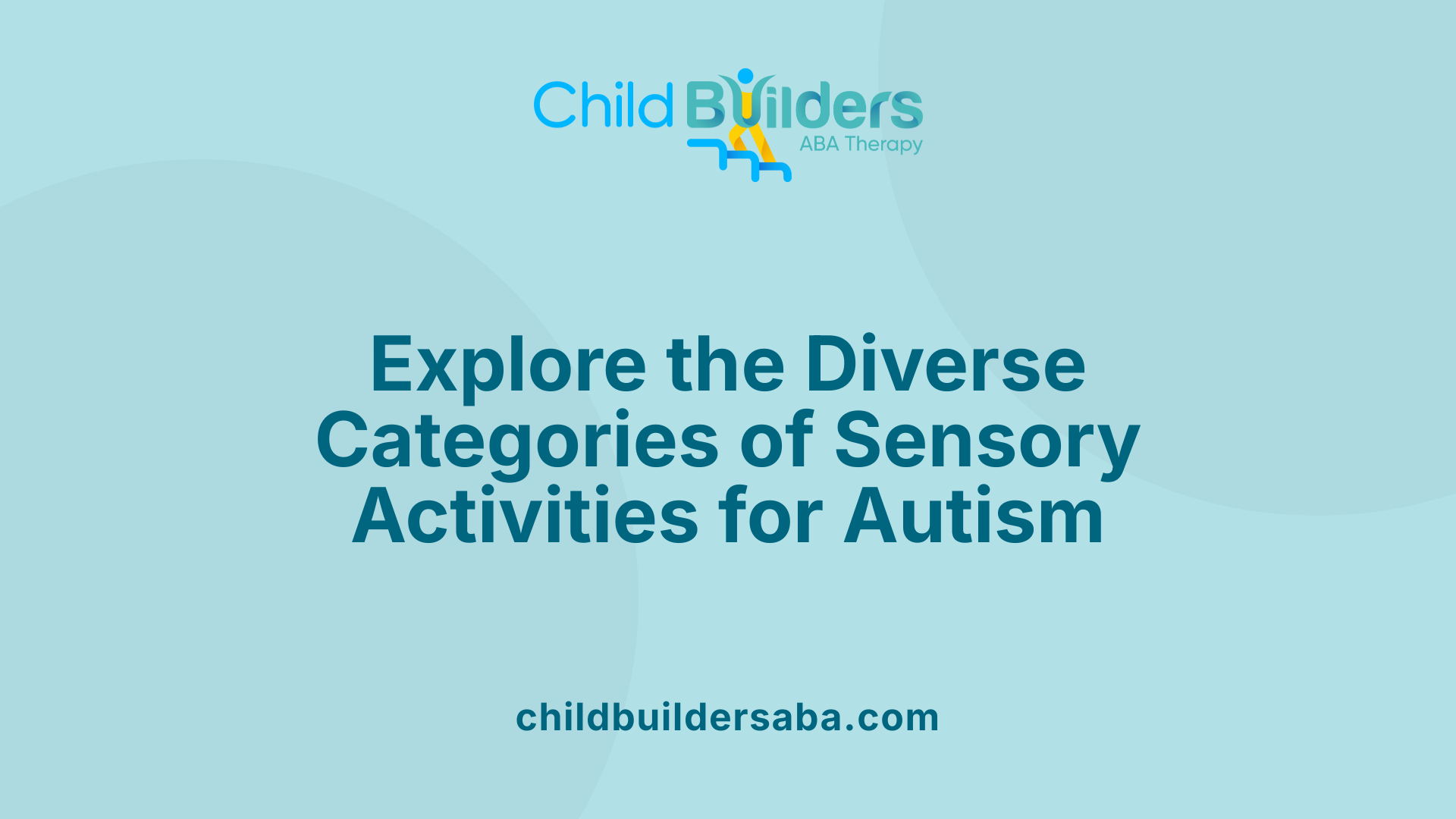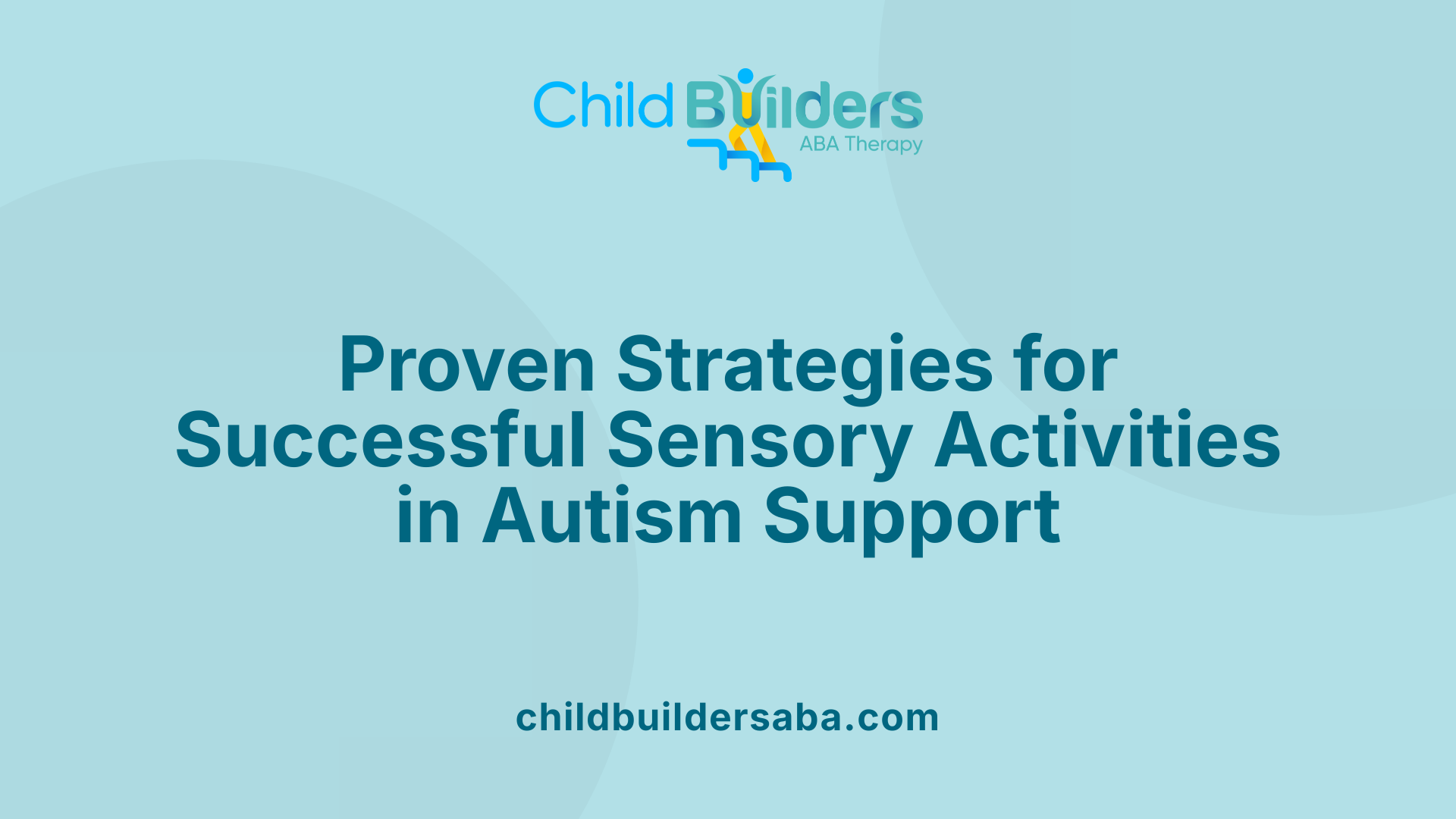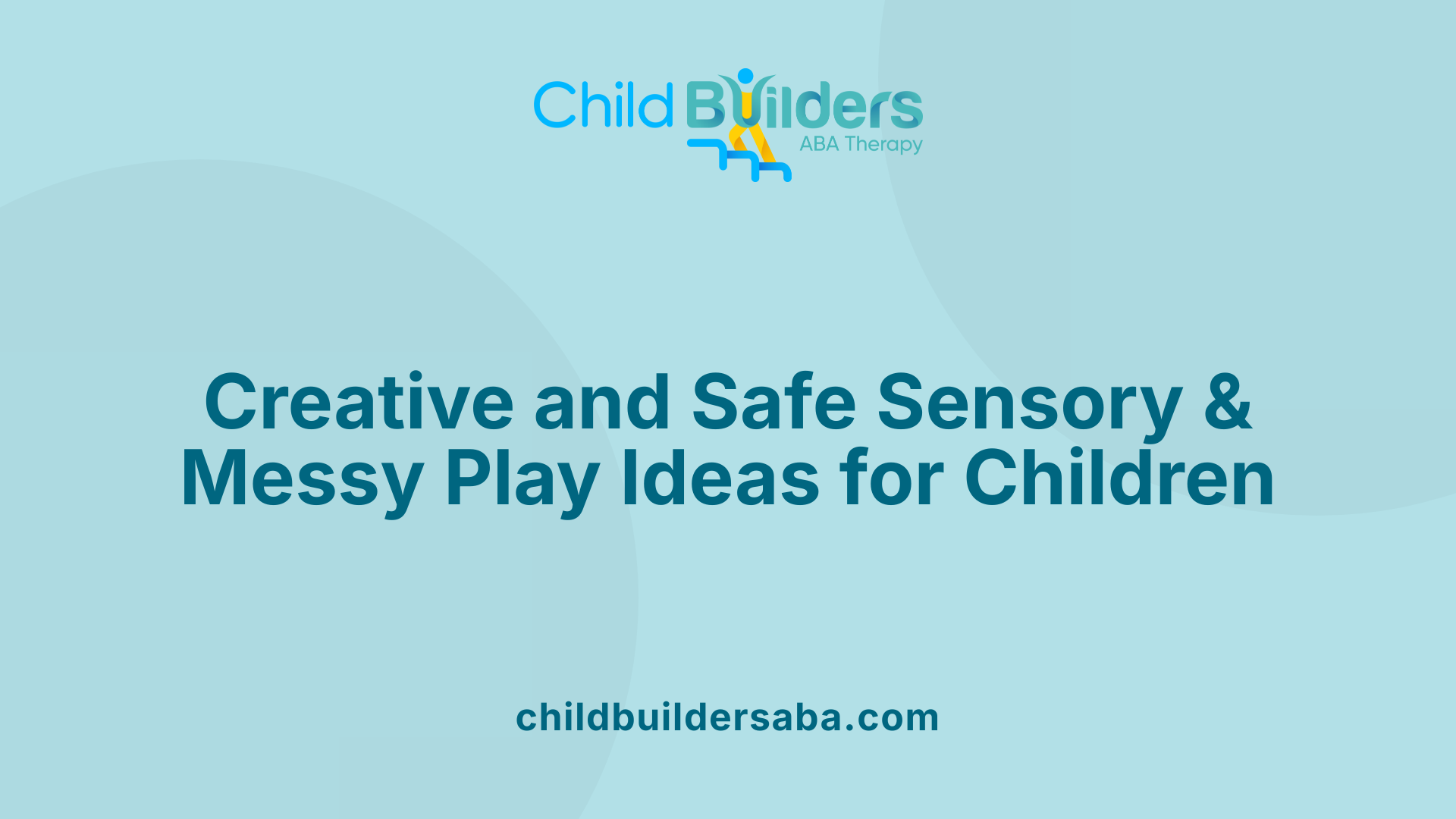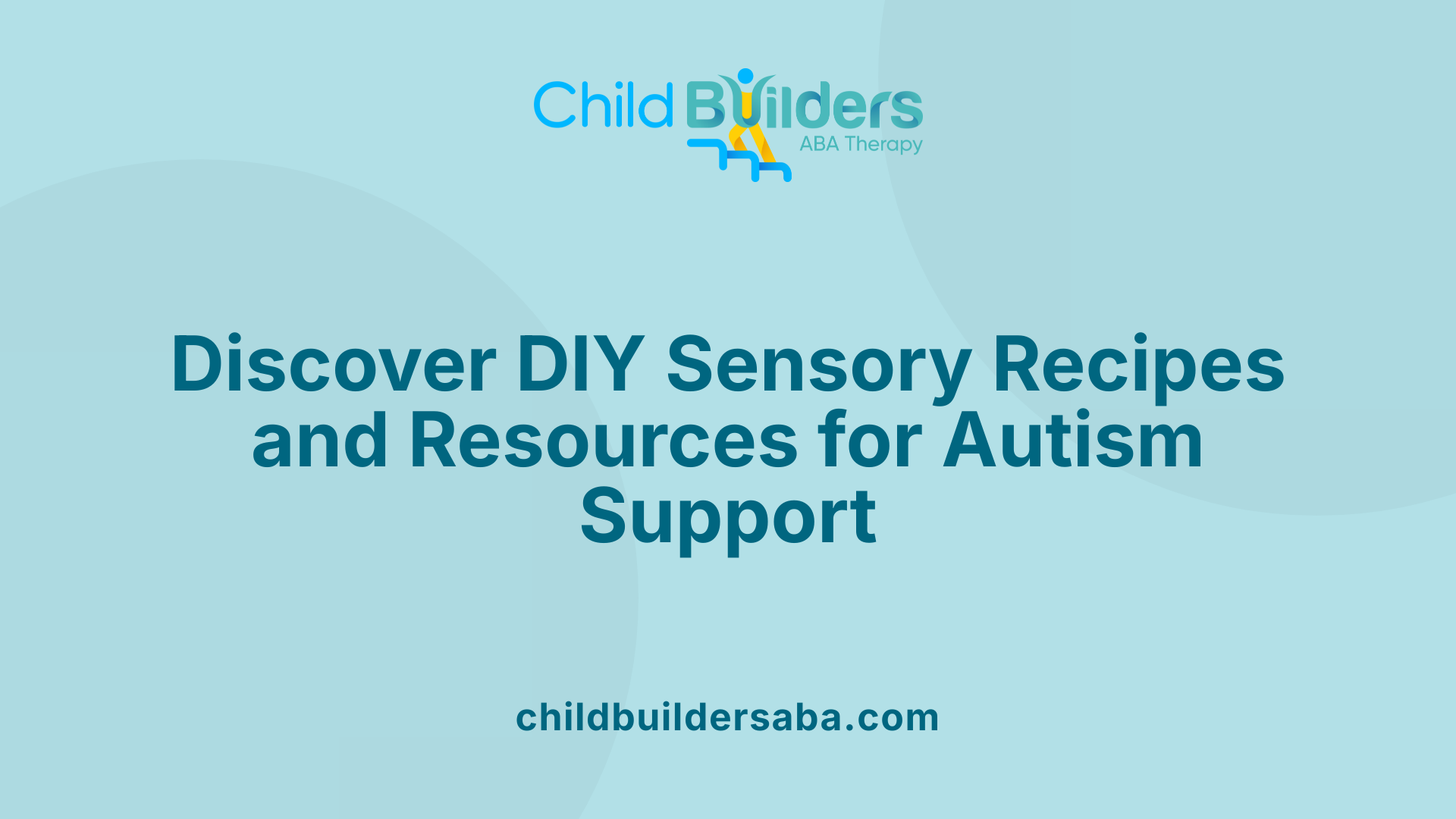Sensory Activities for a Child with Autism

Understanding Sensory Activities for Children with Autism
Sensory activities are vital tools in supporting children with autism, helping them process sensory information, develop motor skills, and regulate emotions. These activities stimulate multiple senses—touch, sight, sound, smell, and taste—while also engaging vestibular and proprioceptive systems crucial for balance and spatial awareness. This comprehensive guide explores various types of sensory activities, their benefits, implementation strategies, and resources, emphasizing tailored approaches to meet individual needs.
Defining Sensory Activities for Children with Autism
Sensory activities are engaging exercises designed to stimulate a child’s senses—touch, sight, sound, smell, taste, and movement. For children with autism, these activities can serve as powerful tools to improve sensory processing, help regulate emotions, and develop motor skills.
Types of sensory activities span across different senses and include tactile, visual, auditory, olfactory, gustatory, and movement-based exercises. Tactile activities, such as playing in sensory bins filled with rice, beans, or sand, allow children to explore textures and develop fine motor control. Visual activities like coloring, calm-down cards, and light toys help with focus and emotional understanding.
Auditory experiences, including listening to music, creating musical instruments, or engaging in sound games, promote auditory discrimination and language development. Olfactory activities involve exploring different scents, which can be calming or stimulating depending on the scent, while gustatory activities like taste tests enable children to identify flavors and enjoy food exploration. Movement-based activities, such as jumping on bubble wrap, dancing, or outdoor gardening, stimulate balance and body awareness.
Safety and individual preferences are paramount when choosing these activities. Not every child reacts the same way to certain textures or sounds, so activities should be tailored accordingly. Using noise-canceling headphones, soft lighting, and sensory-friendly spaces can help prevent sensory overload. Observing each child’s reactions and respecting their sensitivities ensures that sensory play remains fun, engaging, and therapeutic.
Including familiar colors, toys, and elements like music or lights makes sensory activities more appealing. Simply integrating these activities into daily routines helps children anticipate and enjoy sensory experiences, promoting continuous growth and self-regulation. When planned thoughtfully and adapted to each child's needs, sensory activities are essential for supporting their development and well-being.
The Multisensory Benefits of Play in Development

What are the benefits of sensory activities for children with autism?
Sensory activities provide a wide range of advantages that support the development of children with autism. These activities stimulate all five senses—touch, sight, sound, taste, and smell—as well as the vestibular and proprioception systems, which are key to balance and spatial awareness.
Engaging in sensory play helps nurture both fine and gross motor skills. For example, activities like playing with textured materials, using slime, or building with water beads help strengthen muscle coordination and improve hand-eye coordination.
Emotional and social growth are also fostered through sensory activities. They offer children a non-verbal way to express their feelings, reduce anxiety, and develop social skills during group play. Children learn to regulate their emotions better and often feel more confident in participating.
Sensory activities can be especially effective in decreasing anxiety and preventing meltdowns. By providing a structured way to explore their environment, children can self-regulate their emotions and sensory experiences.
Examples of beneficial activities include textured playdough, swinging on sensory swings, water play, and exploring colorful and fragrant materials. These activities encourage curiosity, problem-solving, and creative thought processes.
Overall, incorporating tailored sensory activities into daily routines supports neural pathways development. This enhances motor planning, boosts confidence, and facilitates smoother participation in various settings—be it at home, in school, or within community activities. Sensory play thus acts as a foundational tool for growth, helping children with autism navigate and connect with the world more effectively.
| Benefit | Description | Example Activities |
|---|---|---|
| Neural pathways stimulation | Supports brain wiring for processing sensory information and learning | Sensory bins, slime making, texture exploration |
| Motor skill enhancement | Improves muscle coordination and fine motor control | Drawing, stringing beads, jumping activities |
| Emotional and social growth | Promotes emotional regulation and social engagement | Group sensory play, social games involving textures |
| Anxiety reduction and regulation | Calms overstimulation and encourages self-regulation | Deep pressure activities, use of calming music |
Tailoring activities to the child's individual sensitivities ensures they benefit fully. Whether it involves calming techniques or stimulating play, sensory activities are vital tools for fostering growth and well-being.
Categories and Types of Sensory Activities for Autistic Children
 Sensory activities designed for children with autism span a variety of categories that engage different senses and help with sensory regulation. These activities target the tactile, visual, auditory, olfactory, gustatory, and movement systems, each providing unique benefits and experiences.
Sensory activities designed for children with autism span a variety of categories that engage different senses and help with sensory regulation. These activities target the tactile, visual, auditory, olfactory, gustatory, and movement systems, each providing unique benefits and experiences.
Tactile activities focus on touch and textures. Examples include playing with slime, finger painting, sensory bins filled with rice, beans, or sand, and messy play with shaving cream or jelly. These help children explore different sensations, develop fine motor skills, and increase tactile awareness.
Visual stimulation involves colorful and bright materials. Activities like rainbow pasta, glow-in-the-dark water, or visual arts projects attract children’s attention and can improve visual processing skills. Visual cues like colorful lights or visual schedules also support structured learning.
Auditory activities include using musical instruments, engaging in dance, or participating in sound-based games. Noise-canceling headphones can be used for auditory regulation, helping children manage sensitivities to loud or unexpected sounds.
Olfactory activities involve scents that can be calming or stimulating. Scented playdough, flavored play foods, or smell guessing games engage this sense and can be used to promote olfactory discrimination and emotional regulation.
Gustatory activities are centered around taste and often involve tasting games, flavored foods, or edible art. These activities enhance taste discrimination, promote acceptance of new foods, and support oral motor development.
Movement-related activities harness the vestibular and proprioceptive systems. Examples include jumping on sensory paths, spider web walks, or balancing activities. These help develop body awareness, improve coordination, and regulate energy levels.
To facilitate these sensory experiences, children often use tools like fidget toys that offer tactile input, sensory bins filled with various materials, and mess-free options such as sealed sensory bags with glitter or beads. Quiet tools like calming music or sensory rooms can provide a peaceful environment for self-regulation.
Incorporating a mix of these sensory activities into daily routines can significantly enhance emotional well-being, motor development, and sensory processing. Tailoring the activities to each child's preferences and sensitivities ensures a positive, engaging, and therapeutic experience, supporting overall growth and learning.
Supporting Skill Development Through Sensory Engagement
How do sensory activities support skill development in children with autism?
Sensory activities are vital tools in helping children with autism develop a wide range of skills. By engaging their senses—touch, sight, sound, smell, and taste—these activities help children process sensory information more effectively. As a result, children often exhibit improvements in motor coordination, such as better muscle control for daily tasks like tying shoes or using utensils.
These activities also boost communication and social skills. For instance, participating in sensory play with peers encourages sharing, turn-taking, and expressive language. Furthermore, sensory activities foster emotional regulation, helping children manage anxiety, frustration, and sensory overload. Engaging with textures, colors, and sounds creates a calming effect and provides an outlet for self-soothing behaviors.
Research shows that structured sensory interventions, especially when tailored to each child's unique sensitivities, lead to significant gains. These include increased independence in daily routines, decreased stereotypical behaviors, and enhanced ability to participate in community activities. Sensory integration therapies help regulate sensitivities, making children more open to exploring their environment and improving their overall developmental trajectory.
The impact of sensory activities extends across multiple developmental areas. In addition to physical benefits, they promote cognitive growth, problem-solving skills, and the development of language. Regular, personalized sensory play fosters meaningful progress, helping children navigate the world with increased confidence and adaptability.
Impact of personalized sensory intervention
Every child with autism has a unique sensory profile. Personalized sensory interventions recognize this diversity and adapt activities to fit individual needs. For some children, calming activities like weighted blankets or soft fabrics are beneficial, while others might thrive on more stimulating options like jumping on a trampoline or playing with textured toys.
Tailoring sensory activities ensures they are both engaging and effective, promoting sustained participation. When children feel safe and understood within their sensory preferences, they are more likely to develop new skills and enjoy the process. This personalization boosts motivation, improves behavior, and enhances the generalization of skills across different contexts.
In summary, sensory activities, when customized appropriately, serve as powerful catalysts for developmental progress. They support motor, communication, social, and emotional skills, laying a foundation for greater independence and quality of life for children on the autism spectrum.
Effective Strategies for Implementing Sensory Activities

What are some tips and strategies for implementing sensory activities with autistic children?
Successfully integrating sensory activities into the routines of children with autism requires careful attention to individual needs and preferences. First, personalize each activity to suit the child's sensory sensitivities. For example, children who are sensitive to noise might benefit from noise-canceling headphones, while tactile seekers may enjoy weighted lap pads or textured materials.
Creating a calm and predictable environment also plays a vital role. Consistent routines and familiar spaces help children feel secure and more willing to engage. Incorporating sensory activities into daily schedules can make these experiences more routine and less overwhelming.
Movement and proprioceptive input are effective tools in supporting self-regulation. Allowing children to take regular breaks for activities like swinging, jumping, or crawling can help them manage their sensory needs while improving focus.
Using sensory tools and accessible materials, such as chew toys, scented objects, or textured fabrics, provides safe outlets for sensory exploration. These items cater to different sensory modalities and can be incorporated into various activities.
Developing a personalized sensory diet—an organized plan that includes scheduled sensory activities—can enhance participation and help maintain sensory balance. Combining this with environmental modifications, such as soft lighting, minimal clutter, or calming visuals, supports a sensory-friendly space.
Overall, the key is to observe and adapt. By tailoring activities, providing appropriate tools, and creating a consistent, supportive environment, caregivers and educators can foster meaningful sensory engagement that promotes development and emotional well-being.
Guidance for Caregivers and Educators in Sensory Play
Supporting children with autism through sensory play involves careful planning and tailored approaches that promote development, self-regulation, and enjoyment. Caregivers, educators, and parents can benefit from practical resources including detailed activity ideas, safety guidelines, and strategies suited to each child's sensory profile.
Educational materials like step-by-step instructions for creating sensory bins, slime, water play, and tactile activities help ensure safe and engaging experiences. These resources often include safety precautions, such as avoiding fragrances or foods that could trigger allergies, and suggest ways to modify activities to suit individual sensitivities.
Incorporating professional advice from organizations like the National Autistic Society can be beneficial. They recommend sensory clothing, noise-canceling headphones, and calming environments to help manage overstimulation. Using visual aids and predictable routines also assist children in feeling secure and understanding what to expect.
Personalization is essential — activities should be adapted based on each child’s preferences and sensitivities. For instance, some may enjoy tactile activities like slime or sand, while others may prefer visual or auditory stimuli. Including inclusive options, such as allergy-aware ingredients or sensory tools, ensures all children can participate comfortably.
Creating a supportive environment involves not only choosing appropriate activities but also establishing consistent routines that children can anticipate. Providing sensory breaks and calming options like calm-down cards, quiet zones, or mindfulness exercises helps children self-regulate emotions and prevent meltdowns.
Overall, effective guidance combines accessible educational resources with a flexible, empathetic approach. When adults are equipped with the right tools and understanding, they can facilitate sensory play that is both meaningful and safe, encouraging positive growth and enjoyment for children on the autism spectrum.
Ideas for Engaging Sensory and Messy Play
 Children with autism can benefit greatly from sensory and messy play, which stimulates their senses and supports development across various areas. Popular activities include finger painting, slime making, water play, rainbow ice excavation, scented playdough, outdoor gardening, and using sensory bins filled with rice, beans, or sand.
Children with autism can benefit greatly from sensory and messy play, which stimulates their senses and supports development across various areas. Popular activities include finger painting, slime making, water play, rainbow ice excavation, scented playdough, outdoor gardening, and using sensory bins filled with rice, beans, or sand.
Fingertip painting allows children to explore textures and colors directly, helping improve fine motor skills and creativity. Making slime introduces multiple sensory inputs—touch, smell, and sight—and can be customized with different scents or colors to suit individual preferences.
Water play, such as pouring, splashing, or exploring water beads, provides tactile and visual stimulation while encouraging motor coordination. Rainbow ice excavation involves freezing small toys in colored ice cubes and letting children discover objects as the ice melts, offering a cold, engaging sensory experience.
Scented playdough, which can be infused with safe fragrances, enriches olfactory senses and promotes calming. Outdoor activities like gardening or playing with textured natural objects support sensory integration and provide calming, grounding experiences.
Using sensory bins with small items like pasta, beans, or rocks provides endless opportunities for tactile exploration and problem-solving. Incorporating fun tools like scoops, brushes, or spoons makes the activities more engaging.
To make messy play more manageable, options like using Ziploc bags for paint or slime allow children to explore without creating widespread mess. Sharing these activities with peers or caregivers also fosters social skills and cooperation.
Always tailor sensory activities to each child's individual sensitivities and interests. Safety precautions, such as supervising with small items and using non-irritating materials, are essential.
Including sensory play in daily routines supports emotional regulation, enhances language development, and boosts social interaction. When children explore through engaging, safe, and personalized activities, they build important skills while having fun.
Resources and Recipes for Sensory Activities
 Finding trustworthy resources and recipes for sensory activities tailored for children with autism can significantly enhance playtime and therapeutic routines. Specialized websites dedicated to autism support often provide a wealth of ideas, including over 41 DIY and outdoor activities such as slime-making, playdough, oobleck, and sensory bins with rice, beans, or sand. These platforms typically include detailed recipes that use safe household materials, encouraging tactile exploration while ensuring safety.
Finding trustworthy resources and recipes for sensory activities tailored for children with autism can significantly enhance playtime and therapeutic routines. Specialized websites dedicated to autism support often provide a wealth of ideas, including over 41 DIY and outdoor activities such as slime-making, playdough, oobleck, and sensory bins with rice, beans, or sand. These platforms typically include detailed recipes that use safe household materials, encouraging tactile exploration while ensuring safety.
For example, recipes for sensory salt dough or cloud dough can be easily prepared at home, engaging children in hands-on, sensory-rich experiences. These recipes generally focus on simple, non-toxic ingredients to promote safe exploration.
Visual aids play a vital role in implementing these activities. Many websites offer videos and step-by-step guides that demonstrate how to set up activities, use safety gear like gloves or goggles, and modify tasks for children with different sensitivities. Visual routines can help children understand what to expect, reducing anxiety and increasing participation.
Organizations such as Autism Speaks also share community-based ideas and recommendations. These include insights on tailoring sensory activities to individual needs, emphasizing the importance of observation and adjustment based on each child's sensory preferences.
In summary, the best sources for sensory activity recipes and resources are specialized autism-focused websites, community forums, and organizations offering supportive guidance. They not only provide practical recipes and craft ideas but also stress safety precautions and the importance of visual aids, helping caregivers facilitate safe, engaging, and beneficial sensory experiences.
Fostering Ongoing Sensory Engagement and Support
Incorporating a variety of sensory activities into daily routines can significantly enhance the development and well-being of children with autism. Tailoring activities to individual sensitivities, creating predictable and safe environments, and involving children in planning foster a sense of security and joy in exploration. Resources, community ideas, and professional guidance make it easier for caregivers and educators to implement effective sensory strategies. When approached with patience, creativity, and understanding, sensory play becomes not only a therapeutic tool but also a fun and empowering experience that supports children in reaching their full potential and thriving in diverse environments.
References
- 10 Sensory activities for autism
- 24 Classroom Activities for Kids with Autism | Waterford.org
- Tips for Parents: Sensory Activities for Children on the Spectrum
- 7 Sensory Play Activities For Kids On The Autism Spectrum |
- Benefits of Sensory Activities for Children with Autism - ECCM
- 10 Sensory Activities for Kids With Autism - Achieve Beyond
- 10 Sensory Activities for a Child with Autism - Foster Care Associates
- 41 Awesome Messy Play Recipes for Autistic Children - Gympanzees



.jpg)

































































































